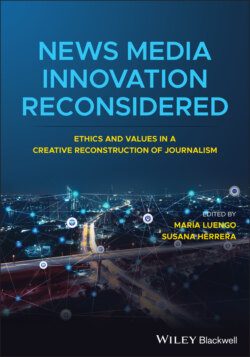Читать книгу News Media Innovation Reconsidered - Группа авторов - Страница 17
Convergence and Multimedia Content
ОглавлениеThere were two main trends at the beginning of the new millennium: experimenting with convergence by combining news, products, and processes in separate newsrooms of print, television, and online media; and producing multimedia content for several outlets (Singer, 2006). Convergence soon became a buzzword that shook most newsrooms: editors asked newspaper reporters to record videos at the scene or to make their own summaries of the news for radio or television. Managers commissioned broadcast journalists to write articles for the newspaper and to promote the stories included in the print media. Thus, journalism became “convergent” and journalists more versatile, as they had to generate content simultaneously for several platforms (García-Avilés, Meier, and Kaltenbrunner, 2016).
Regarding the production of multimedia content, there was a lot of resistance by journalists. Some of them admitted that this was due to fear of the unknown. However, others justified their fear on ethical grounds, emphasizing the detrimental effects on the news quality, the limited time available to produce more pieces, and the increasing pressure to develop pieces for radio, website, print, and/or television. Work overload often reduced journalistic quality and increased tensions among staff in multimedia newsrooms (Carvajal and García-Avilés, 2008).
